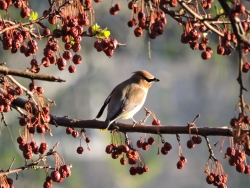
Courtesy & Copyright Friend Weller
Through the cascading shadow, the dance of the waning wing-bearers becomes even more dramatic. As the sun continues to slide below the mountains, the insects increase their pace it seems, and then begins the cataclysm of the birds. Small gray and off-gray birds with different flecks, inflections, songs, and hearts, though unified as the kind that would easily build a good hardy nest in an old dilapidated mug, begin diving through the midges and gnats and flies and mosquitoes. The birds are trapeze artists. Starting from a perch in a nearby tree, they swoop with grace through the air in a dramatic arc. At the nadir of their swing, the snare roll abruptly halts, a sharp inhale of silence descends like thunder and is followed in quicktime by a cymbal crash as the acrobats catch their purse in midair. Then, gently arching back up to the adjacent branch across, a great applause raptures. Like this, the birds dive and breach, avian orcas earning their rich protein in preparation for the imminent changing of the season. The horizon of thin times drives the orchestra of life onwards.
As I watch the fading insects, bugs, winged things, and other wonders I ponder as to why many see them as pests. In the evening glow, it seems an impossible identity for these fellow inhabitants of our world. Do people fear them? Not understand them? Believe they belong in one place and not another? Watching them in that moment, the thought escapes my mind and I am glad. I am glad to forget their supposedly assigned state, and I instead reforge my memories anew in the present, watching them as sparks in the swiftly quenching day. The perpetual creation of the world continues along, with I and you and all we’ve ever known and will know wrapped within it.
I’m Patrick Kelly, and I’m Wild About Utah.
Credits:
Images: Courtesy & © Friend Weller https://upr.org/
Audio: Courtesy & © J. Chase and K.W. Baldwin https://upr.org/
Text: Patrick Kelly, Director of Education, Stokes Nature Center, https://www.logannature.org
Included Links: Patrick Kelly & Lyle Bingham, Webmaster, WildAboutUtah.org
Additional Reading
Wild About Utah, Posts by Patrick Kelly
Top 20 Identified Insects, Utah Plant Pest Diagnostic Lab, Extension, Utah State University, https://extension.usu.edu/pests/uppdl/top-20-insects





